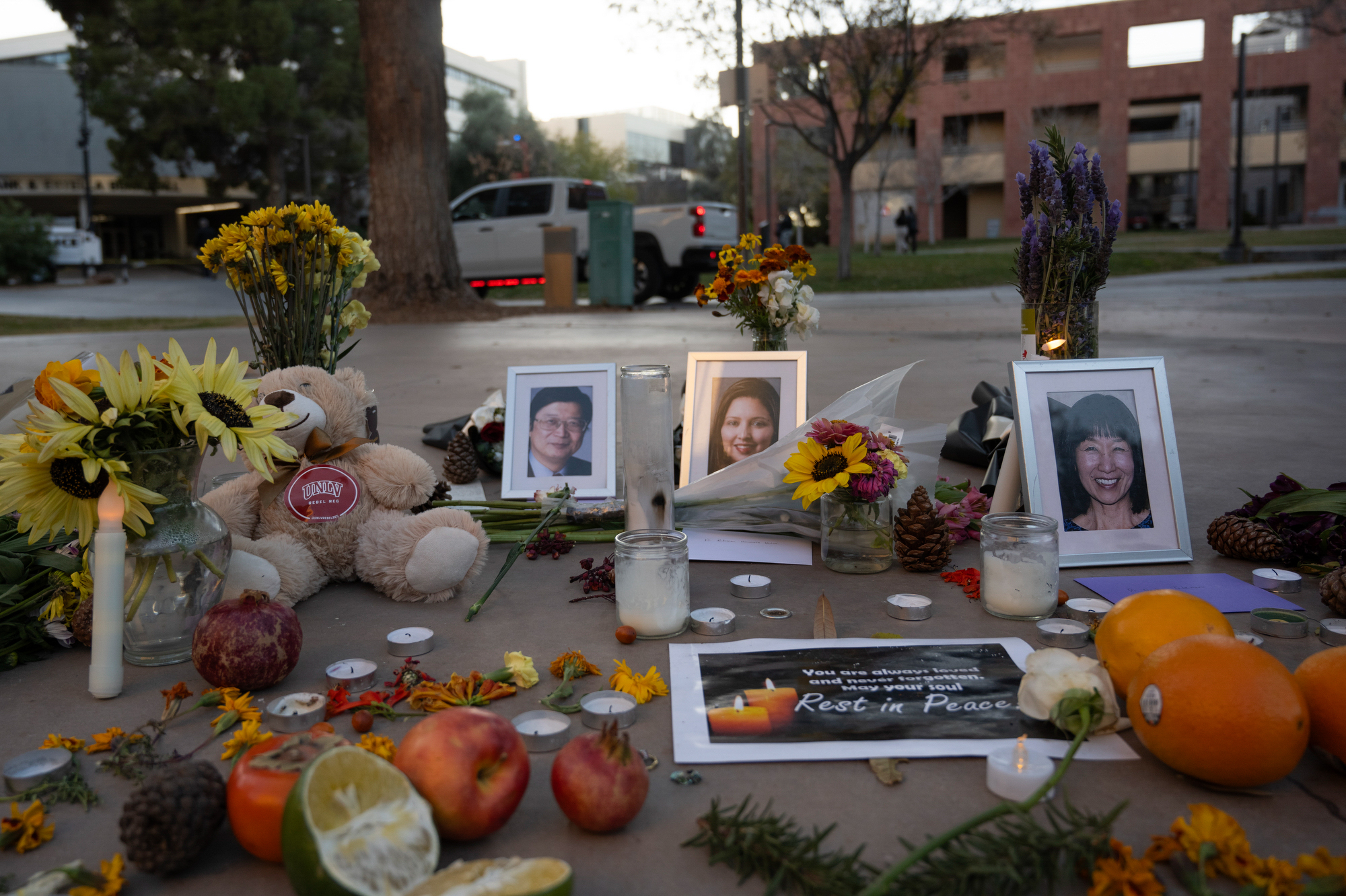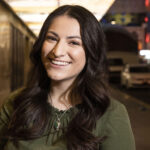Amidst their grieving, UNLV professors’ question of racial targeting lingers

As they gathered Wednesday in the rose garden at UNLV, days after the Dec. 6 shooting at Beam Hall that left three professors dead, some faculty and students couldn't ignore the victims’ racial backgrounds.
Patricia Navarro Velez, who was Puerto Rican, Cha Jan “Jerry” Chang, who was Taiwanese, and Naoko Takemaru, who was Japanese, were part of the 38 percent of UNLV faculty that are Black, Indigenous, Hispanic, Asian or Pacific Islander.
Police investigators have not formalized a motive for the shooter, beyond telling reporters last week that he appeared to be in financial distress, had been rejected for jobs at several Southern Nevada higher education institutions and maintained a list of names that included some members of UNLV’s faculty (though police also said none of those names were among the shooting’s victims).
But Bill Robinson, an economics assistant professor and chair of UNLV’s Faculty Senate, argued in a letter to faculty on Dec. 8 that it cannot be coincidence that the professors were people of color, “we cannot simply assume that there was not intent.”
“We are long past ‘thoughts and prayers’ working when it comes to issues of diversity and climate on this campus. I cannot claim to know a thing about the life experience of a person of color on campus or in our country, but I have heard enough from folks who do to know that we have not done nearly enough,” Robinson wrote.
That was echoed in an interview by Doug Unger —a writer and English professor at UNLV and president of the university’s chapter of the Nevada Faculty Alliance who argued the shooter’s actions alone suggested he “obviously” targeted minorities.
“That has to be said, and we have to do something, to make a declaration about that and a community declaration against racism and hate,” Unger said.
For Johnny Trujillo, Navarro Velez was more than a teacher and a mentor, he said during Wednesday’s vigil. She became a friend and sort of an aunt figure.


Trujillo was among the about 500 students, faculty and community members who gathered around UNLV’s rose garden, some carrying flowers and candles to honor the three slain professors Wednesday.
Trujillo remembered the times he and Navarro Velez would compare the foods and cultures of their Mexican and Puerto Rican heritages. Navarro Velez was one of the 645 Hispanic faculty members at UNLV, according to internal data from the Nevada System of Higher Education (NSHE).
“I was also extremely fond of her and looked up to her … She could never contain the biggest smile at all of our events. Sometimes even with her phone out and like a proud aunt,” said Trujillo, who studies information systems and accounting. “I'll miss her warm, inclusive atmosphere about her. I was looking forward to soon calling her my colleague, my peer, my friend when I graduated this year, but we will not waver.”
As one of the universities with the most diverse student body, with 69 percent of students being non-white, the disproportionate faculty-to-student diversity ratio was an early issue for UNLV President Keith Whitfield, the university’s first Black president, who said in his first State of the University speech in 2021 that there was “inherent, structural racism at this university.”
But for some, faculty diversity also means the students have someone who looks like them as their teacher or mentor and have recently called on Whitfield to “create a new position, adviser to the president for diversity, equity and inclusion, one separate from that of chief diversity officer, to address the issues this shooting has brought to the fore.”
At Wednesday’s vigil, UNLV business student Allister Dias, told The Nevada Independent that realizing the professors were all people of color made him ask himself whether it was a targeted attack.
“As a person of color, to see that a couple of the professors were immigrants and to have been robbed from their hard work — Just gone like that. That angers me beyond comprehension,” Dias said. “It's incredibly disheartening to see how much just a few minutes changed an entire community.”
Having been on campus Dec. 6 and hearing the commotion from the Student Union, Dias said he’s taking it one day at a time in terms of healing. Being back on campus, though, feels “foreign” to him.
“It doesn't feel like your home is your home anymore. It feels like that safe place has been violated. That safety bubble has kind of been popped,” he said. “It's a place that I felt so comfortable being in and nowadays, I don't have that same kind of feeling … Hopefully it does come back.”

